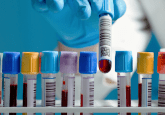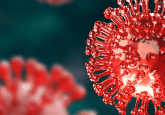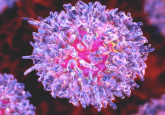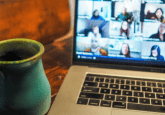Elaine Mardis on taking AACR 2020 online, key challenges and the fields to watch in cancer research
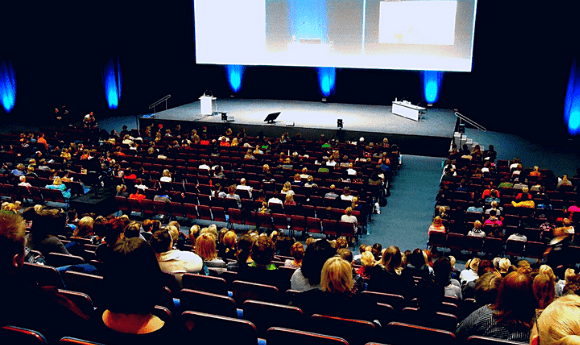
When the COVID-19 pandemic threatened the cancellation of this year’s meeting of the American Association for Cancer Research (AACR), the association’s President, Elaine Mardis, and the AACR board of directors made the decision to move the event online. In this interview, Digital Editor Tristan Free speaks to Elaine about the challenges of making the switch, what she learned from the process and some of the biggest obstacles currently facing cancer research.
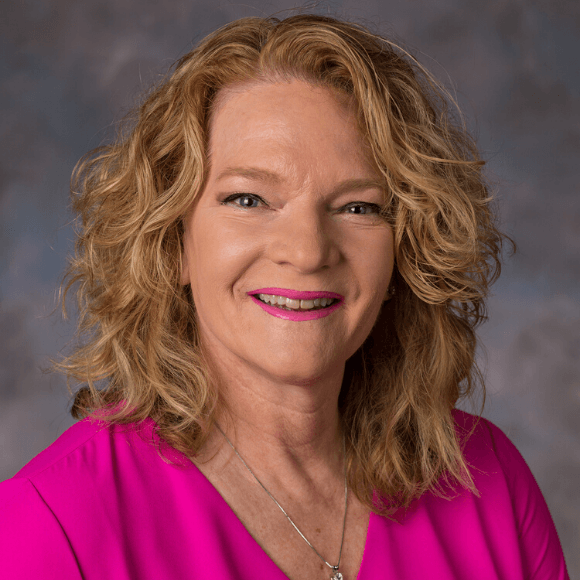 Please can you introduce yourself and tell us a little bit about your role at AACR?
Please can you introduce yourself and tell us a little bit about your role at AACR?
My name is Elaine Mardis. I am the Steve and Cindy Rasmussen Endowed Chair at Nationwide Children’s Hospital and a professor of pediatrics at the Ohio State University (both Columbus, Ohio). I am also the current President of AACR.
There have been some big challenges along the road to this year’s AACR Virtual Annual Meeting I. How difficult was it for you to pivot the conference to an online format?
Well, difficult comes in different forms and flavors. I think probably the most difficult thing was quite simply making the decision that we weren’t going to have an in-person meeting in San Diego. We asked the AACR board of directors to take all the different angles into consideration during a virtual online meeting and make that decision, which was unanimous. It was done with respect to the people who attend our meeting every year physically, in excess of 22,000 individuals from all the different spheres of the cancer research and cancer clinical translation world. So, academics, people from industry, patient advocates, you name it. We wanted to be respectful of their health and that of the people they care for and interact with when they get back to work at their respective cancer centers and hospitals.
The second part was really a strong conviction that, even though we were not going to have an in-person meeting, we had put together an incredible scientific program that we wanted to have our attendees enjoy and learn from. We also had the largest number of late-breaking abstracts related to phase 1, 2, 3 clinical trials to date, many of which had important results, and we wanted to get those results presented to our community. This virtual meeting that you just saw a few weeks ago was largely designed to do just that, to take the top tier late-breaking clinical trials and make sure that the results from those were communicated in an active online format that allowed the ability to ask questions and have discussions, much like you would do if you were in person.
Once we had made that decision, then I think the hard work came down to Toni Ribas (UCLA, California, USA), the Program Committee chair for the 2020 meeting, and me working closely with Nilo Azad (Johns Hopkins, MD, USA) and Manuel Hidalgo (Harvard Medical School, MA, USA) who were the chairs of the Clinical Trials Committee. We worked together to flesh out the clinical trial presentations and then added sessions to comprise a full offering, not just for those who are interested in clinical trial results, but also for those more oriented to the underlying basic science of cancer research and clinical translational research.
We will have a second three-day meeting, that’s a bit more full-fledged along the lines of what one would normally encounter at any in-person AACR Annual Meeting which typically stretches for four and a half days, but a little bit condensed. We will have cancer research supporters of considerable notoriety to greet our attendees, luminaries from the U.S. Congress, who I won’t name yet.
For the second AACR Virtual Annual Meeting, what are you most looking forward to?
I am looking forward to a more broad-based offering of sessions that appeal to the membership of AACR wherein we continue to increase the scope of cancer researchers who are involved in AACR. This will include aspects of pathology, aspects of radiology or cancer imaging research, and also will emphasize prevention, early detection and specific research in underserved minorities. In addition, we will have e-poster sessions, award recipient lectures, and the original Opening Plenary Session will be presented.
So I think it will be a broader offering than the Virtual Annual Meeting I, which was only two relatively short days and did not offer a huge variety. In the second meeting, we also will offer around 70 educational sessions and workshops, which typically happen just prior to our annual meeting.
What do you think has worked particularly well in the online format and what do you miss in comparison to the physical meeting?
What worked remarkably well was having the session chair discussions and presenters live during the time that their session was being presented and having the active chat box for questions. The session chair could filter the questions, which could then be addressed live by the speakers. I thought that was great, it was a complete surprise to me how effectively that worked. I even tried to ask a question during one of the sessions, but there were so many questions that my question didn’t get asked! I think that’s a fantastic indicator of how many people attended and were active in asking questions. We had over 61,000 people signed up for the meeting, so it was inevitable that we would have, for any given session, more questions than could be addressed.
Obviously, with respect to the second part of your question, what do you miss? I have been in this field for a relatively long time. There are a lot of people that I know and have developed relationships with, friendships around the science of cancer research and shared interest areas that I want to see in person. There was a small video that was put together by Paul Driscoll at AACR that showed pictures of me throughout my year of presidency that we watched that after the virtual annual meeting was over last week. It really reminded me of how much I missed the interpersonal interactions. It’s just hard to replace that with a screen in front of you. I think that is the part that everybody agrees they miss.
Hear about the highlights of each day of the AACR Virtual Annual Meeting I from our Digital Editors in their daily coffee chat round ups:
- AACR Virtual Annual Meeting I: Day 1 Editors coffee chat
- AACR Virtual Annual Meeting I: Day 2 Editors coffee chat
Is there anything that you think you would take forward from this online meeting and incorporate into the physical meeting the next year?
Yes, I do and I think that’s a good question. We had a discussion on Tuesday night when the meeting ended, with all of the AACR planning committee folks, even some of the session chairs and speakers, and one of the things that I said in addressing the group was how well I thought the virtual meeting 1 had gone, but also the fact that, in my opinion, the AACR annual meeting will never be the same. What we learned from this experience was that there is huge hunger out there for information, for science, for results. On any given year, while we want to welcome as many people as we possibly can, there’s obviously a huge subset of people, reflected by the number of people signed up for this online meeting, who simply can’t attend. My synopsis was that in the future, my sincere hope is to address the needs of people who would like to be there but couldn’t physically attend by having a concurrent in-person and virtual meeting.
Excluding COVID-19, what do you think some of the key challenges facing cancer research are at the moment?
The field of cancer research techniques and technology has never been richer than it is now. There are so many ways to pursue cancer research that it is simply mindboggling. I do, however, feel that part of the challenge in all of this is securing the continual support from the general public and from tax dollars, to continue our push forward. So we have this embarrassing wealth of riches in terms of technology knowhow, granularity, resolution, integration, whatever word you want to choose, but we often are limited by the amount of research dollars available to make progress, which is probably the biggest limitation.
I think the other challenge from the standpoint of younger people getting into the field now, is the uncertainty about what trajectory their career will follow. Because it’s such a rich field in terms of the level of interest, the impact that people’s research has on cancer patients, the ideas that they want to pursue. Funding, certainly, is again a key issue here, as I think it can often prevent researchers from going further sometimes just because there isn’t the certainty of a job or support for the research in a particular area.
Are there any areas of cancer research at the moment that you think offer a lot of promise in the next 5 years?
I think two of the abstracts that were presented, one from Grail (CA, USA) and one from DETECT-A, the Johns Hopkins (MD, USA) group, at the Virtual Annual Meeting I are, in one form, a very interesting and intriguing path forward. So these were the two abstracts about technologies used in early detection of cancer, and while certainly not perfect, I think we now have gone extraordinarily far down this path, in particular focusing on cancers that are traditionally very difficult to detect early.
The earlier we detect cancers, of course, we know the likelier the outcomes are to be good, not only in terms of alleviating the disease burden when it’s low but also alleviating continuing cycles of aggressive therapies, which often have very negative side effects. As someone who works in pediatric cancer, I am very keenly interested in how we can translate some of these findings from the adult setting, where they are almost exclusively being tested at this point, to the pediatric setting and in particular focusing on our pediatric and adolescent patients with known cancer susceptibility. I think that’s one area that is just rife with promise and we will continue to improve as technology and other approaches drive forward.
I think the other area that is incredibly promising is the identification of new drug targets within cancers. That has really exploded. There will be more on that in the next annual meeting in June as well. So it’s exciting to see this continuum developing between modern cancer genomics – an area where I have been active for a very long time and its intersection with the identification of new drug targets, cancer biology and drug development, which I think has incredible promise for developing better therapies with fewer side effects.
The last obvious area is immunotherapeutics. Engaging the patient’s own immune system to fight their cancer. We are commonly thinking about checkpoint blockade inhibitors, but even the first two days of the annual meeting that already passed, there were numerous new approaches: CAR T-cells for solid tumors, the bispecific antibodies that are approaching hematologic malignancies and probably will progress from there, and areas including oncolytic viruses and personalized vaccines, et cetera.
When you were starting out in your career, did you have any heroes that inspired you to follow your career path into cancer genomics and pediatrics?
The cancer genomics work somewhat naturally occurred because when I first started out at Washington University in St. Louis (MO, USA), there were a number of medical oncologists there who continued to say, “you have got this human genome, so can you help me understand why my patients are getting cancer?” That was before next-generation sequencing even existed. We had worked early on (2004) with Harold Varmus to link EGFR mutations and response to tyrosine kinase inhibitors in lung adenocarcinoma. But as NGS platforms emerged, the encouragement of colleagues like Tim Ley (Washington University) in acute myeloid leukemia, with whom we sequenced and analyzed the first cancer genome (Nature 2008), like Matt Ellis (Baylor College of Medicine, TX, USA) and Chuck Perou (University of North Carolina, NC, USA) in breast cancer, alerted me to the potential of genomics in cancer research and its clinical translation. Then with the advent of next-generation sequencing, I think it really just opened the field up in extraordinary ways.
The other person that really was a hero to me and I was fortunate enough to meet a couple of times was Janet Rowley (University of Chicago), who I often mention when I give lectures because she was one of the first to start looking at cancer chromosomes under the microscope. She established that the translocations and substantial changes to the genome at the levels that she could resolve with a microscope were the hallmarks of different types of hematologic malignancies. I often say next-generation sequencing as just a higher resolution microscope. In a lot of ways, I think Dr. Rowley pioneered the field of cancer genomics and it was a career highlight for me to be able to interact with her when she was alive. In pediatrics, I receive continual motivation from the patients we are able to help with our genomics-based evaluations, which is so gratifying.

